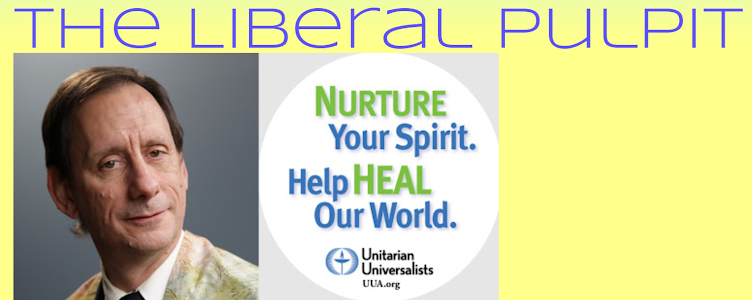The Blues, part 3
“When you are joyous, look deep into your heart and you shall find it is only that which has given you sorrow that is giving you joy. When you are sorrowful look again in your heart, and you shall see that in truth you are weeping for that which has been your delight....Your joy is your sorrow unmasked. And the selfsame well from which your laughter rises was oftentimes filled with your tears. And how else can it be? The deeper that sorrow carves into your being, the more joy you can contain.” (Kahlil Gibran, The Prophet)Animals we are, with bodies made for pain, made for attachment and therefore made for loss. I understand that there is only so much of the grief of the world that one person can take in, before feeling the need to step back, turn away, think about something else. But as we grow wiser, develop spiritually, we can take in more, be present to more of reality for longer periods.
Most of us recognize and are generally sensitive to the limits of our capacity to be present to the world’s pain. We don’t want to be a downer, always talking about "the awfulness, oh, the horrible awfulness of it all." (We recognize that mocking, don’t we? It’s a device for pushing away the full experience of our grief.)
But here’s something you might not have noticed. It is the same with ecstatic joy. There are limits to our capacity to be present to the world’s ecstasy. Soon we feel the need to step back, turn away, get serious again, get back to business. Here, too, as we grow wiser, develop spiritually, we can take in more, be present to more of reality for longer periods – both the reality of grief and the reality of joy.
Your capacity to hold, take in, and stay with the world’s sadness is equal to your capacity to hold, take in, and stay with joy – for there is really only one capacity there that takes in both. “The selfsame well from which your laughter rises was oftentimes filled with your tears. The deeper that sorrow carves into your being, the more joy you can contain.”
The spiritual path is one of growing that capacity, that single capacity for being present to reality exactly as it is. When we are able to take in the woe, take it all the way in and not turn away, we perceive shining through it a jubilant beauty. When we stay with a euphoria, a rapturous happy celebration, take it all the way in and look at it all the way through, we perceive also its foundation of tragedy and pain. Your capacity for sadness is equal to your capacity for joy, because they are the same capacity.
We live in a culture that is not very spiritually developed. It thinks we need to push sadness away rather than welcome it in. But even our culture of relentless cheer, with its insatiable appetite for the vacuously happy and the shallowly upbeat, has a crack. The blues. For some people, listening to sad songs is the only time they voluntarily allow themselves the greater wholeness of presence to sadness.
With training in a spiritual discipline, that crack grows wider, and capacity for presence to sadness grows, the inclination to push it away diminishes. One such spiritual discipline is Tonglen: a form of meditation in Tibetan Buddhism. In this practice, one visualizes taking in the suffering of oneself and of others on the in-breath, and on the out-breath giving recognition, compassion, and succor to all sentient beings. You imagine yourself breathing all the world’s anguish, letting your mind move to world events of war, violence, disease or to specific loss and hurt of people you know. Breath that in – take it into yourself. On the exhale, breath out compassion for this suffering. Imagine that your exhaled breath flows out to hurting people and gives them comfort. Objectively, it doesn’t – but spending some time imagining it does re-orients us toward living compassionately.
The Dalai Lama reports he practices Tonglen every day. He says, "Whether this meditation really helps others or not, it gives me peace of mind. Then I can be more effective, and the benefit is immense."
We are in different places in our development of this capacity. For example, there once was a minister in his first year with his new congregation. At that congregation’s social event of the year, which included a big dinner, the new minister was invited to offer a prayer before dinner. And so he prayed, as was his way, calling to mind all of reality, those who are suffering and mourning, as well as all that is good, true, beautiful, and evokes our gratitude. It was a celebratory occasion, a time for revelry and cheer. For some of those gathered, the reminder of suffering seemed like a downer, inappropriate to the occasion. Others, though, understood that real joy is in connectedness to all of life, that every moment we intentionally push a part of reality out of our mind we perpetuate a kind of sham upon ourselves. For them, the prayer helped the occasion feel real and authentic. The call to compassion lifted their spirits because it connected them outside the little bubble of the moment. Centered in a wider reality, they were then ready to more whole-heartedly party.
The different responses illustrate that we are not all at the same place in our spiritual development. Wherever you may be on your spiritual journey, the blues offers to all of us a standing invitation for a greater presence to sadness – and the greater joy that goes with that.
* * *
This is part 3 of 3 of "The Blues"
See also
Part 1: Dukkha and The Blues
Part 2: Happiness vs. Joy



No comments:
Post a Comment